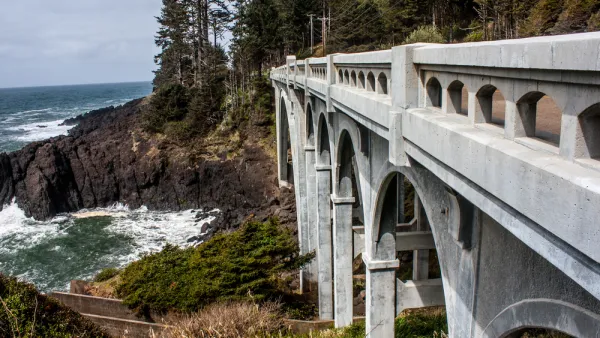State DOTs generally have not been viewed as the most progressive forces in transportation, often perceived primarily as road builders. So a recent "challenge" to drive less, if only for 12 days, came as a surprise. But hey, it's Oregon!
Why would the Oregon Department of Transportation (ODOT) sponsor such a challenge?
Reducing congestion is understandable, as that's in the mission of most state DOTs, but ODOT's goals were also to reduce greenhouse gas emissions and fuel use by reducing vehicle miles traveled (VMT), according to the AASHTO Journal.
The campaign, which ran from Oct. 21-Nov. 1, encouraged Oregon drivers to seek other forms of transportation for those 12 days, including walking, biking, taking public transportation, or carpooling. ODOT's goal was to eliminate 500,000 vehicle miles traveled by single drivers from the roadways.
The outcome surpassed ODOT's goals. According to their report, "thousands of participants cut more than 900,000 miles during that 12-day period. Those vehicle miles were reduced in many ways, as participants logged 21,885 bike trips, 12,500 carpool occurrences, 9,902 bus rides, 2,561 light rail trips, 147 streetcar rides, 7,805 walking trips, 2,106 telework instances, and 990 vanpool trips."
The result: "Elimination of 652,960 pounds of carbon dioxide emissions while saving 33,608 gallons of gas and $223,479." ODOT is contributing to the state effort "to reduce these emissions to levels 75 percent below those experienced in 1990 by 2050. The Drive Less Challenge was created to have an impact on those numbers while also creating more awareness for citizens of their transportation options and behaviors," writes AASHTO.
As we posted here earlier, Oregon signed the Pacific Coast Action Plan on Climate and Energy (PDF) on Oct. 28 to reduce these emissions. And then there's ODOT's commitment to intermodalism that we described here last May. All of which makes ODOT not your typical DOT.
As for participants in the Challenge program, winners were rewarded with gifts that included a $2,600 credit for a custom-built folding bike and annual transit passes,
Correspondent's note: It appears that ODOT refers to both the Oregon Department of Transportation and Ohio DOT. Confusing?
FULL STORY: Oregon DOT Surpasses Goals in Drive Less Challenge

Analysis: Cybertruck Fatality Rate Far Exceeds That of Ford Pinto
The Tesla Cybertruck was recalled seven times last year.

National Parks Layoffs Will Cause Communities to Lose Billions
Thousands of essential park workers were laid off this week, just before the busy spring break season.

Retro-silient?: America’s First “Eco-burb,” The Woodlands Turns 50
A master-planned community north of Houston offers lessons on green infrastructure and resilient design, but falls short of its founder’s lofty affordability and walkability goals.

Test News Post 1
This is a summary

Analysis: Cybertruck Fatality Rate Far Exceeds That of Ford Pinto
The Tesla Cybertruck was recalled seven times last year.

Test News Headline 46
Test for the image on the front page.
Urban Design for Planners 1: Software Tools
This six-course series explores essential urban design concepts using open source software and equips planners with the tools they need to participate fully in the urban design process.
Planning for Universal Design
Learn the tools for implementing Universal Design in planning regulations.
EMC Planning Group, Inc.
Planetizen
Planetizen
Mpact (formerly Rail~Volution)
Great Falls Development Authority, Inc.
HUDs Office of Policy Development and Research
NYU Wagner Graduate School of Public Service




























